Week #6, June 28/29, 2018
- On: June 27, 2018
 0
0
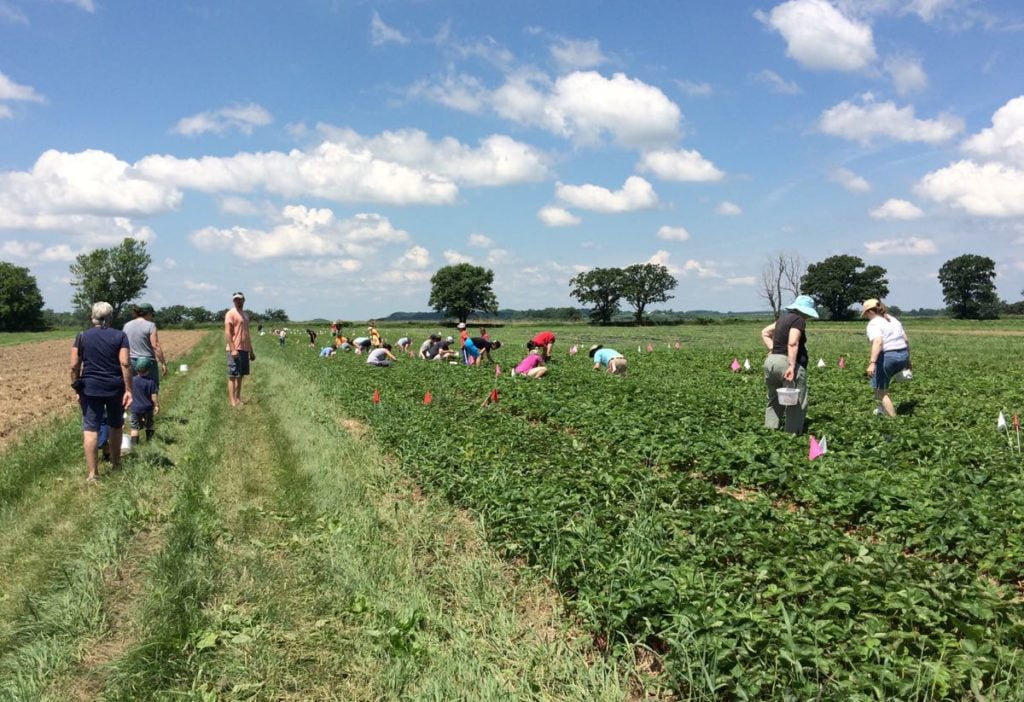
It was a beautiful day for the strawberry upick. Considering the weather the rest of the week, we were very lucky. Billy (in orange shirt) greets members and shows them where to pick.
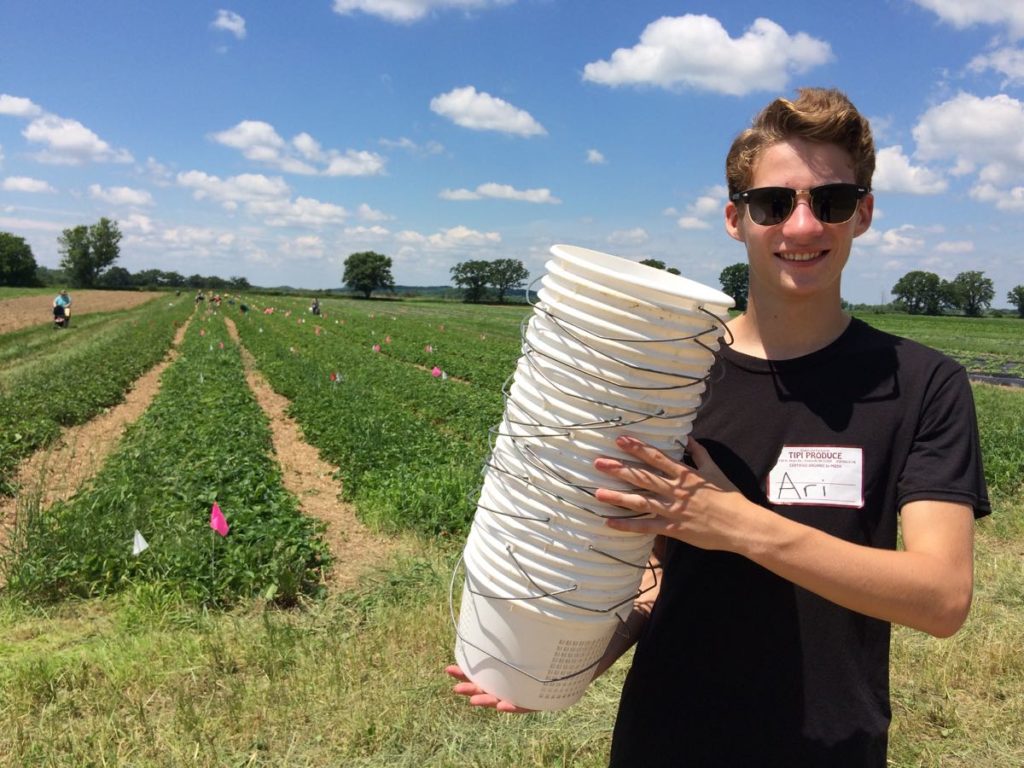
Ari was ready to share both pails and lifetime’s experience picking strawberries.
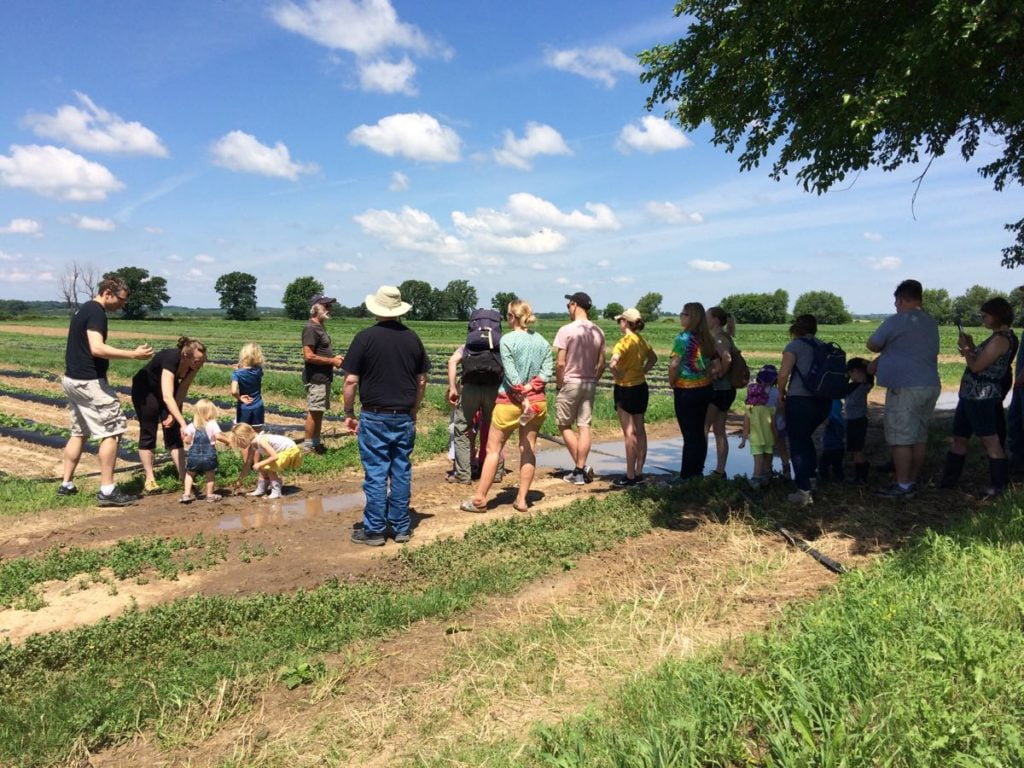
Steve (with beard, 6th from left) led a tour of the farm. He agreed to make this year’s tour a little shorter. He loves showing everyone the farm but sometimes we find members quietly backing away mid-tour because they want to pick more berries.
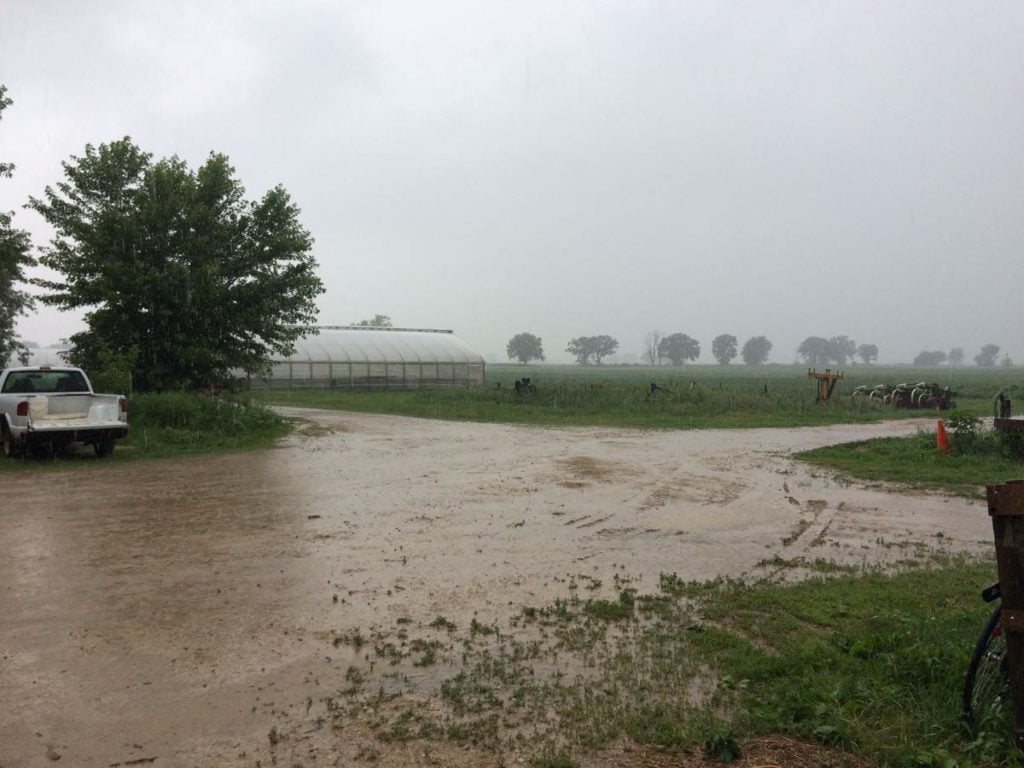
Well, we got more rain this week, just like all of you.
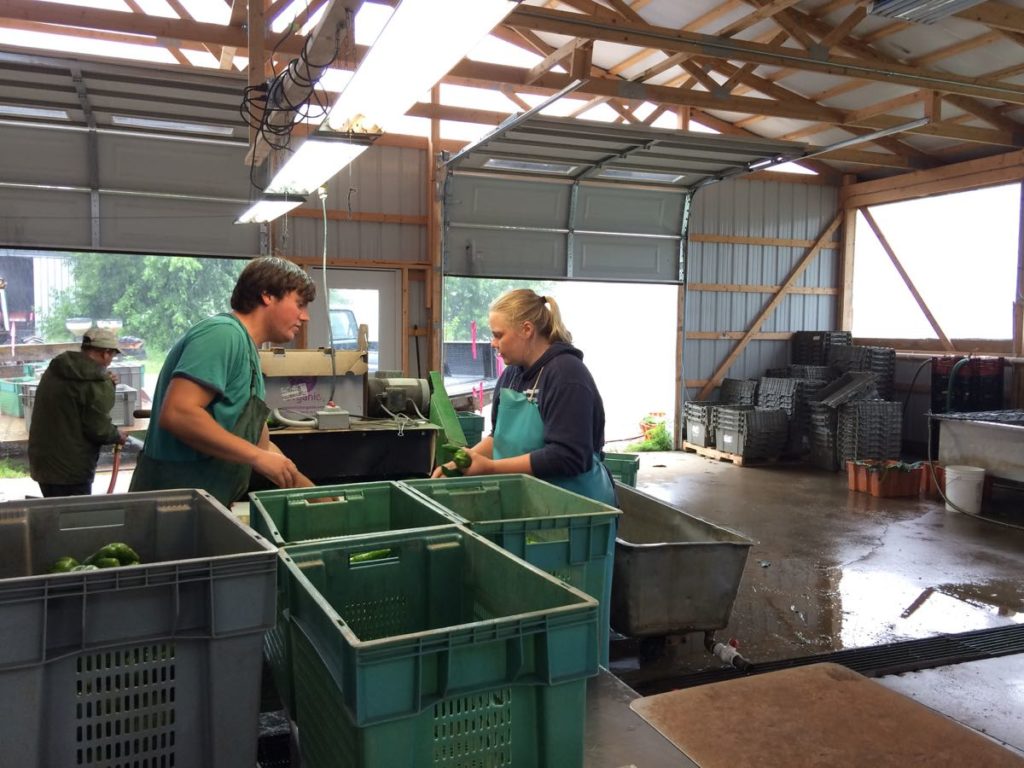
We were strategic with our time, harvesting between storms and saving indoor jobs for during downpours. Above, Raul, Jory and Sena wash your peppers.
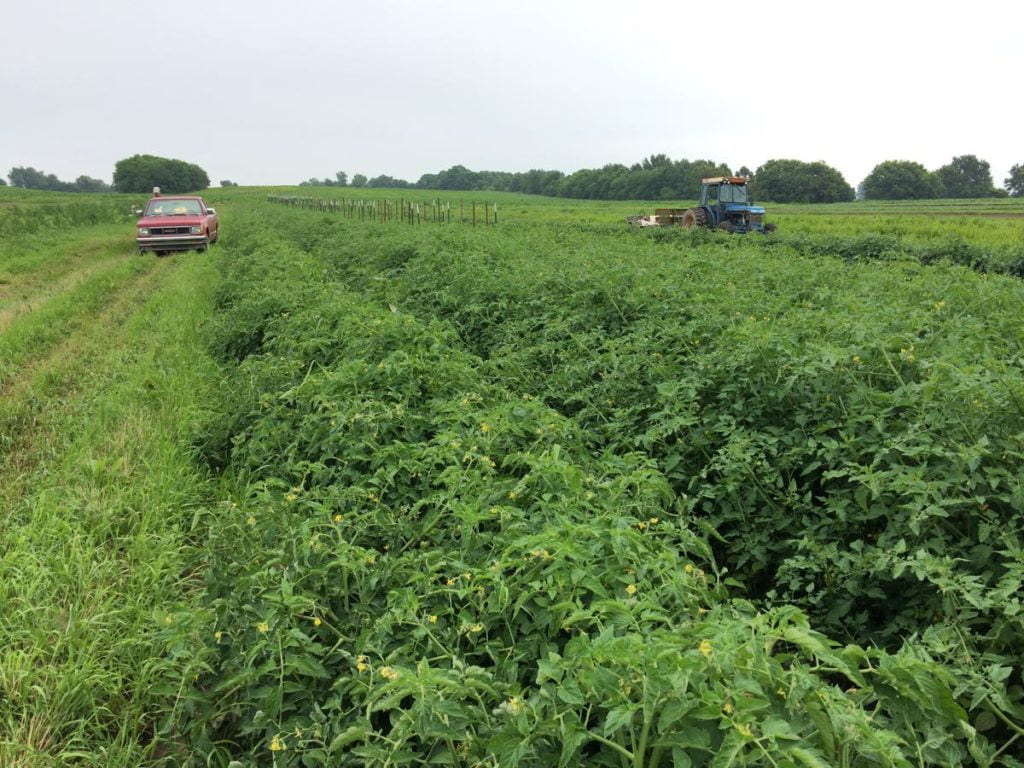
I have to say that our crops are loving the moisture + heat. Look at the lush tomato plants.
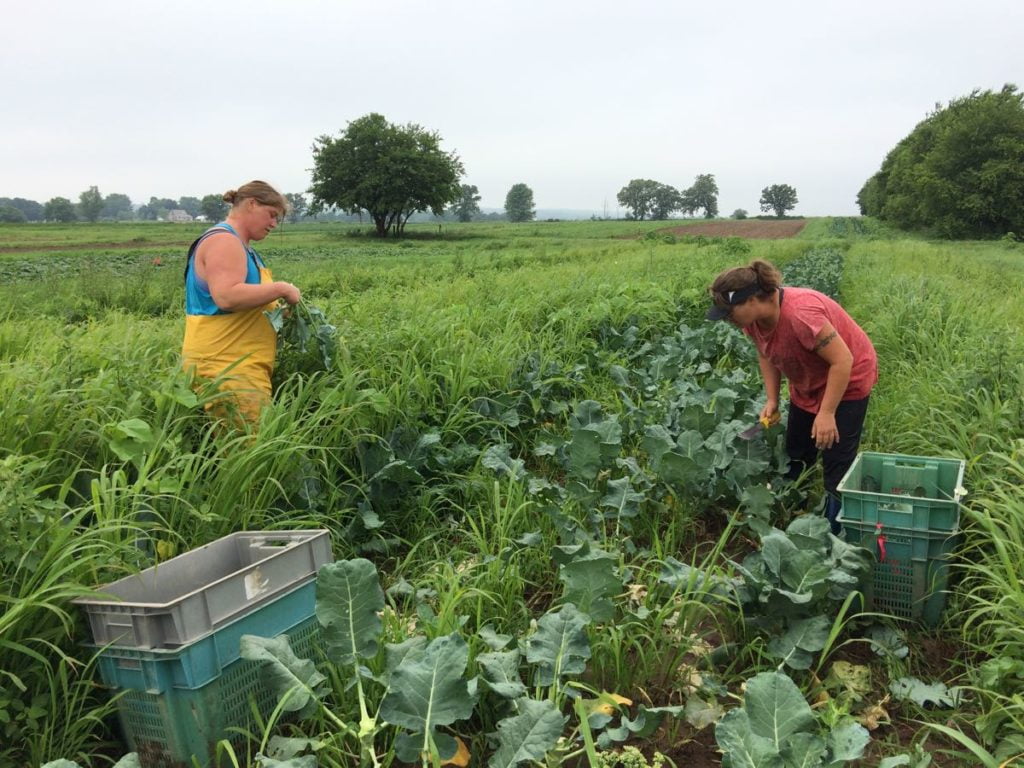
However, we are getting behind on weeding. Maggie and Kristen harvest broccoli. These weeds are very big because we’re almost done with this field. We’re using our dry spells to cultivate and weed as much as possible, trying to keep ahead of the weeds that are thriving after the rain.
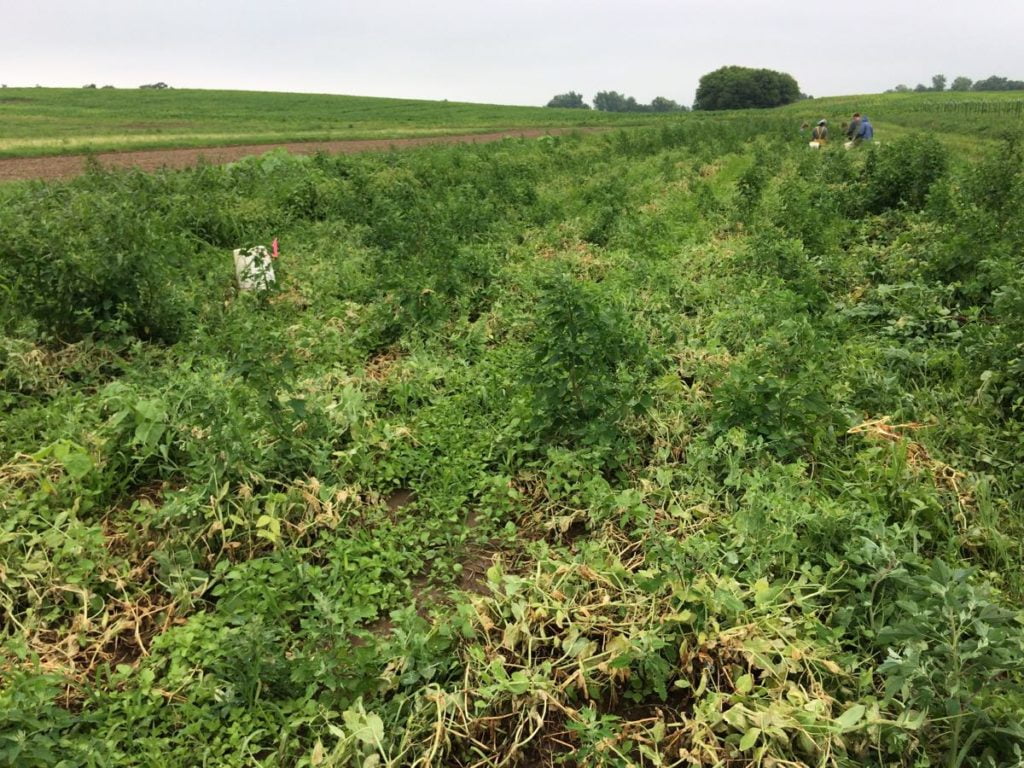
No snap peas this week. We usually get two (or more) harvests from each pea field. Last week’s harvest in the mud wrecked the plants. Now we wait for the next pea field to be ready.
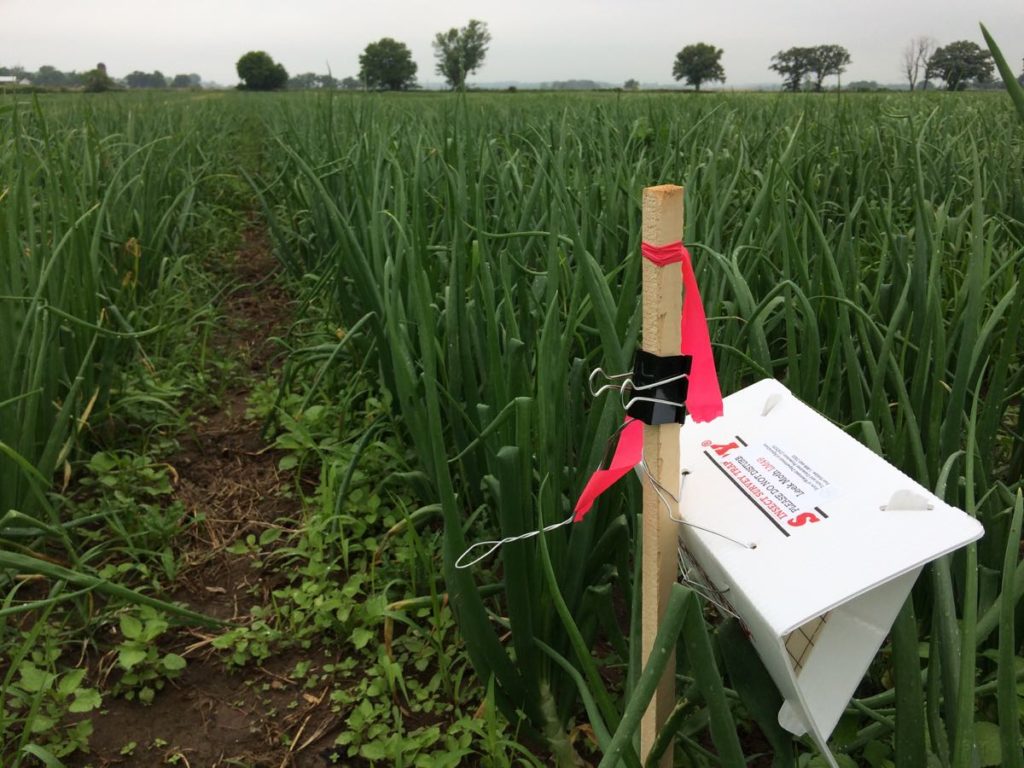
A visiting entomologist from DATCP installed insect traps. She is monitoring for several vegetable pests that are found in neighboring states but haven’t made it to Wisconsin yet. Advance monitoring like this is extremely valuable, so we volunteered to host the traps. Hopefully we won’t find anything.
Veggie List and Veggie Notes
Strawberries, 1 quart
Napa cabbage
Zucchini and summer squash, 3.5 – 4 lb
Broccoli, ~2 modest heads
Green bell or green frying pepper, 1 – 2
Kohlrabi, 1
Scallions, 1 bunch
Basil, 1 large branch
Garlic scapes, 1 small handful
– Some sites get 1/4 lb snow peas.
– Some sites get a second pepper.
Next week’s box will probably contain Caraflex cabbage, Walla Walla onion, zucchini/summer squash, basil and more.
Strawberries – Refrigerate and eat soon! These berries are in better shape than last week’s but are still perishable after all the rain.
Napa cabbage (large, pale green cabbage with crinkled leaves) – This week’s napa average 2.75 lb in size. This is an interesting vegetable, useful for both fresh, raw salads and for cooking. Napa’s most famous use is fermented kimchi. I like to prepare a fresh, unfermented kimchi. Same seasonings, but it’s ready to eat right away. You will be amazed at how much shredded napa cabbage shrinks when prepared this way. See here for an example, but cut the salt in half: Grilled Flank Steak with Kimchi-style Coleslaw.
Storage: Napa stores very well. Cut off wedges as needed and keep the rest covered and refrigerated, and it will keep for several weeks. Peel off the outer layer and it will be ready to use. Here are a few preparation ideas from the ‘Asparagus to Zucchini’ cookbook.
– Chop raw napa into green salads.
– Substitute napa in traditional coleslaw.
– Chinese cabbage cooks quickly. Steam 3-5 minutes, or until leaves are wilted down but remain slightly crisp.
– Substitute napa cabbage for common cabbage in recipes, but reduce the cooking time by 2 minutes.
– Napa cabbage is the main ingredient in egg rolls. Try making an egg roll mixture to eat as a cooked side dish instead of preparing time-consuming egg rolls.
Broccoli – Refrigerate in a plastic bag or a container. Make sure there’s no free water puddled in the bag or container, to avoid rot. It’s a bad idea to store broccoli uncovered in the fridge; it will wilt.
Green bell or frying pepper – You’ll get a green bell pepper (blocky) and/or a green frying pepper (long, slender). Both types are sweet. Frying peppers have lower moisture which makes them particularly suited to frying. Other than frying, the two types can be used interchangeably in recipes. It will be a few weeks before we have more peppers. Our plants set one early pepper, then there’s a lag while the next set develops.
Kohlrabi (pale green, round vegetable with thick skin) – Crunchy and sweet, kohlrabi is a great addition to salads.
Storage: Kohlrabi bulbs will store for a month in the refrigerator.
Uses: Kohlrabi are good peeled and eaten out of hand, or added to sandwiches, or added to salads. It makes a nice salad on it’s own. You can grate it, slice it, or cut it into matchsticks. It’s also good cooked. If you have it, the Asparagus to Zucchini cookbook has a long list of kohlrabi suggestions.
Basil (either curly or flat-leaved) – Some people will get flat-leaved basil. Others will receive the ‘Napoletano’ variety with frilly leaves. Storage: Basil will blacken if stored in the refrigerator. It is best stored at room temperature with the cut ends in water, for example in a jar or vase. Treat it like a flower. Give the stem a fresh trim and change the water every day or two.
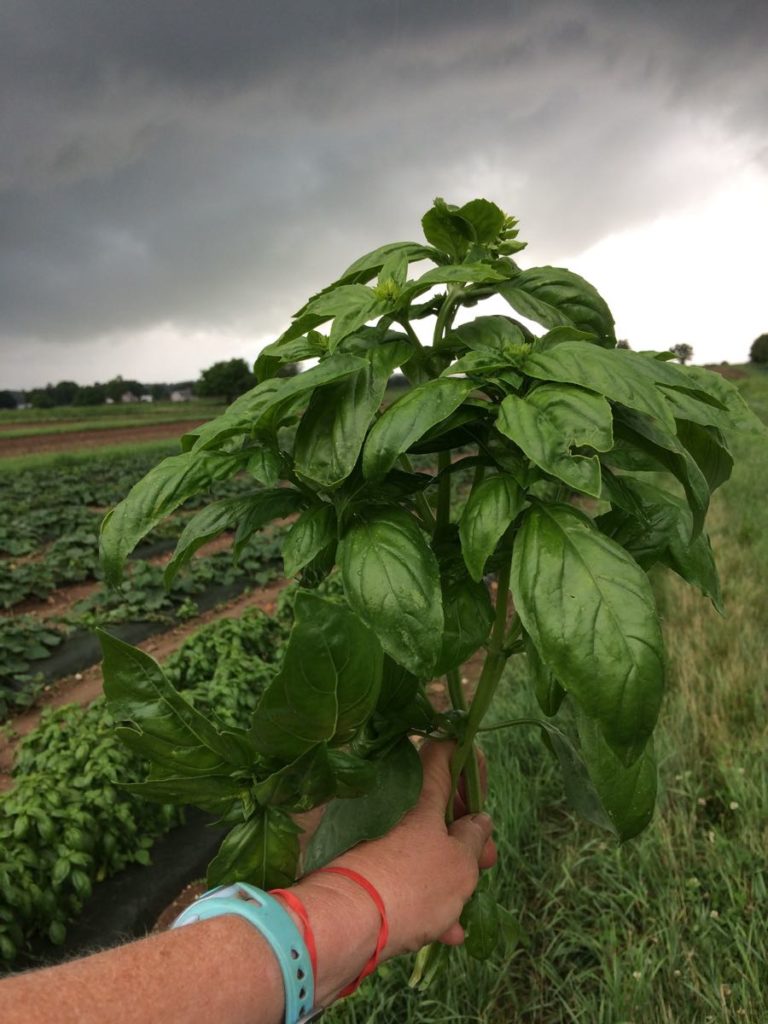
Everyone gets one sturdy basil sprig this week. It looks tree-sized when held up to the horizon! It will look more compact after we’ve washed and packed it.
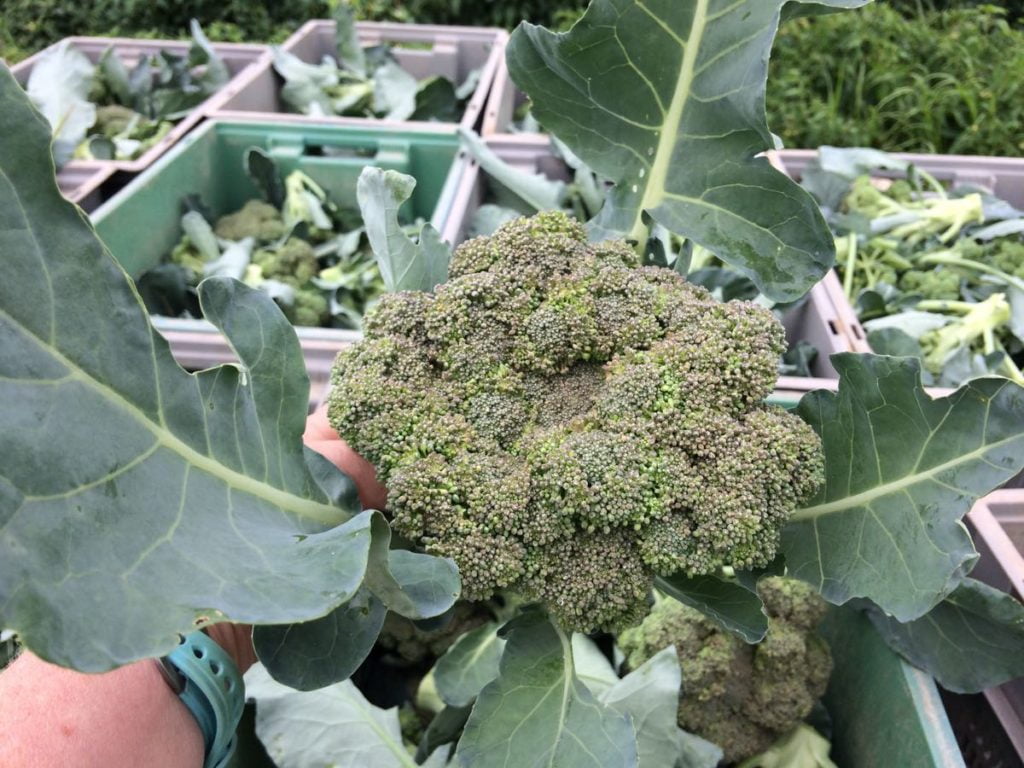
The broccoli heads are uneven this week. This is typical after hot weather.
RECIPES
Visit our 2018 Recipe Log.
Visit our 2017 Recipe Log.
Join our Facebook discussion group.
LOCAL THYME/ Comforting Classics
Thai Tofu Fried Rice with Broccoli and Napa Cabbage
Chipotle Slaw
Broccoli and Kohlrabi Salad
Pasta Salad with Summer Squash, Crushed Almonds and Parmesan
LOCAL THYME/ Outside the Box Recipes
Lake Trout en Papillote with Napa Cabbage Salade
Napa Kimchi
Kohlrabi Fries
Stuffed Zucchini and Summer Squash with Basil
LOCAL THYME/ Quick and Easy Meal
Curried Kohlrabi Cakes
Recipes from Lauren
NAPA CABBAGE NOODLE SALAD
Adapted from Bon Appetit
For this recipe the steak will need to marinate for 10-15 minutes, but you can still prepare this meal in 30 minutes if you get that started right away! While the meat is marinating you will have plenty of time to cut up your cabbage, kohlrabi, scallions, basil and peanuts!
Serves 4
Takes 30 minutes
3 tablespoons toasted sesame oil, divided
1 green bell pepper, seeded and diced
1 garlic scape, sliced
1/4 teaspoon red pepper flakes
Kosher salt
6 tablespoons fresh squeeze lime juice
3 tablespoons fish sauce
3 tablespoons honey
1 pound sirloin steak, bone removed and thinly sliced
6 ounces wide rice noodles
1/2 head Napa cabbage, stems removed and shredded
1 kohlrabi, peeled, quartered and thinly sliced
4-5 scallion greens (dark green portions only), sliced
1/2 cup basil, cut in a chiffonade
1 cup roasted peanuts, roughly chopped
- In a large skillet (preferably cast iron if you’ve got one), heat one tablespoon toasted sesame oil over medium heat. Add the bell pepper, garlic scape, red pepper flakes and a pinch of salt. Saute for 2-3 minutes. Pour into a large bowl followed by lime juice, fish sauce, honey, one tablespoon toasted sesame oil and 1/2 teaspoon Kosher salt. Whisk to combine until smooth.
- Remove 1/4 cup of sauce from large bowl and place in small bowl. Add steak and use a spoon to coat. Let marinade for 10-15 minutes while you cook your noodles and chop remaining ingredients. Stir every once and while to ensure all steak pieces are marinating.
- Bring a large pot of salted water to a boil. Cook rice noodles according to package directions and drain once finished.
- Make sure the cabbage, kohlrabi, and scallion greens are well drained and then add to the large bowl with the majority of the dressing left in it. Add another couple pinches of salt and toss to combine.
- Now get your steak cooking. Pour the last tablespoon of sesame oil into your skillet (the same one you used before; you don’t need to wash it out) and get it nice and hot over medium high heat. Use a fork to transfer the steak (but not the marinade) into the skillet. Cook for 2-3 minutes until cooked through and then let rest for 5 minutes. Add steak and noodles to large bowl of cabbage mixture. Toss to combine and then add basil and peanuts and toss once more. Serve warm.
.
SQUASH TUNA MELT CASSEROLE
Adapted from Six Seasons
Not a fan of canned tuna? Feel free to substitute 10 ounces of shredded chicken breast or some other mild, neutral meat.
Serves 2-4
Takes 1 hour, 10 minutes, most of it inactive
2 pounds zucchini or summer squash
1 tablespoon + 1/2 teaspoon Kosher salt, divided
1/4 cup olive oil, divided
4-5 scallions, white, pale green and 1/2-inch from green tops, sliced
3-4 garlic scapes, sliced
1 teaspoon dried thyme leaves
1/2 teaspoon red pepper flakes
1/4 teaspoon freshly ground black pepper
Two 5-ounce cans oil-packed tuna
1-1/2 cups shredded, good-quality sharp cheddar cheese
1/2 cup breadcrumbs
- Trim off the ends of the squash and halve lengthwise if small or medium in size (under 6 inches long). If larger, quarter them lengthwise. Sprinkle with 1 tablespoon Kosher salt and let sit cut-side up for 30 minutes. This will drain out some of the moisture inherent in squash.
- When the squash has about 10 minutes to go, preheat the oven to 450 degrees.
- Spread the squash cut-side down in a single layer on a baking sheet so that it is not crowded. Roast for 15 minutes until the squash is tender but not mushy.
- Meanwhile, heat one tablespoon olive oil to a medium or large skillet over medium heat. Add the scallions, garlic, remaining 1/2 teaspoon Kosher salt, thyme, red pepper flakes, and pepper. Cook for 4-5 minutes until fragrant and softened but not browned.
- Arrange the roasted squash pieces in a baking dish so that they all fit together snugly together, this side cut-side up. Distribute the scallions and green garlic over the top followed by the tuna. Flake and crumble it evenly atop the squash. Drizzle with a tablespoon of olive oil. Top with cheese, then breadcrumbs and another couple tablespoons of olive oil.
- Return to the oven and bake until the cheese is nicely melted and beginning to bubble and brown, 10-15 minutes. Let cool for 5 minutes before serving.
.



